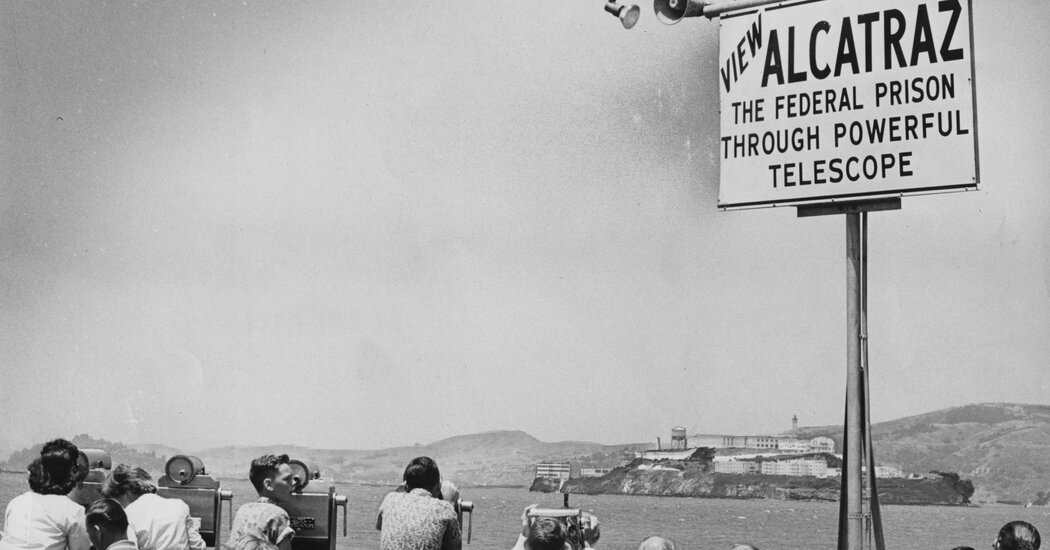A crucial element in the prison’s mythology was its unavoidable presence in the middle of the Bay. There it sat for all to see, its powerhouse pumping out thick black smoke as lines of men walked to and from their jobs in the factories twice each weekday. People paid to view the island through telescopes from Fisherman’s Wharf, hoping to catch a glimpse of somebody famous. When the escape siren sounded, which it did rarely but just enough, the entire bay became an amphitheater. During a brutal attempted break in 1946, when several convicts managed to get their hands on two guns and cause 48 hours of mayhem inside the cell house, the gunfire and grenade explosions around the prison could be seen and heard from the mainland. Traffic slowed on the Golden Gate Bridge and cars parked three deep from Russian Hill to Coit Tower as the siege played out. Spectators sat out in the parks and on sidewalks to watch the action, a death match in real time, like the picnickers at Bull Run during the Civil War.
That proximity to the city, and the city’s proximity to the prison, cemented the public’s connection with what went on there. No matter how mythically brutal a prison might be, it won’t hold our attention if it’s in Florence, Colo., because we can’t see it, can’t see ourselves in it and it can’t see us. Many who take the audio tour on Alcatraz are struck by the same moment: the prisoner who describes being able to hear the dance band, the clinking of glasses and the women laughing at a yacht club across the bay on New Year’s Eve. For a second we feel like maybe we can understand what torture it must have been to lie there and listen. A boundary in time and space briefly becomes permeable, and then we get to go back to being ourselves again.
Alcatraz was full of such paradoxes, the escape-proof prison that wasn’t actually escape-proof. (The three escapees who made it out of the prison and into the water sometime on the evening of June 11, 1962, are presumed to have drowned, but nobody has proved that they did and they had several hours’ head start.) Alcatraz was also a much more humane place than its legend suggests. Yes, it was the end of the line, and as such it was a place of strict routine, restricted privileges and sometimes harsh treatment, but prisoners would tell you that it was the mundane monotony of the place, not the tough conditions, that made doing time there challenging. Even the men in isolation in D Block remained in touch with the rest of the block, where other prisoners could hear their voices, monitor their treatment and even sneak them contraband sandwiches and cigarettes. No such luck for the men locked up in Florence today, who are in lockdown 23 hours a day, have almost no ability to see or connect with another human being and would probably give their arms to serve at Alcatraz as it was.
The administration on the island and at the Bureau of Prisons cared about the men more than you might expect. They met with them, listened to their complaints, encouraged them and wrote their families thoughtful and even misleadingly positive letters to keep minds at ease. Many inmates became so accustomed to the routine on Alcatraz that when they were transferred to other prisons — a reward for good behavior — they asked to go back. As Harry Radkay, who was housed next to Machine Gun Kelly, put it, “If you minded your own business and did your own time, no one bothered you.”
This is not the Alcatraz that they show you on the tour, nor is it the Alcatraz that the current administration has in mind when it contemplates reopening the place. When Mr. Trump mentions Alcatraz in the same sentence as Sing Sing, a similarly ancient prison in New York, and then refers to “the movies,” the jig is mostly up. He likes Alcatraz, the Big House of big houses, because it has the right look, the right image, the right clientele and it’s right in everyone’s faces — his sweet spot.


